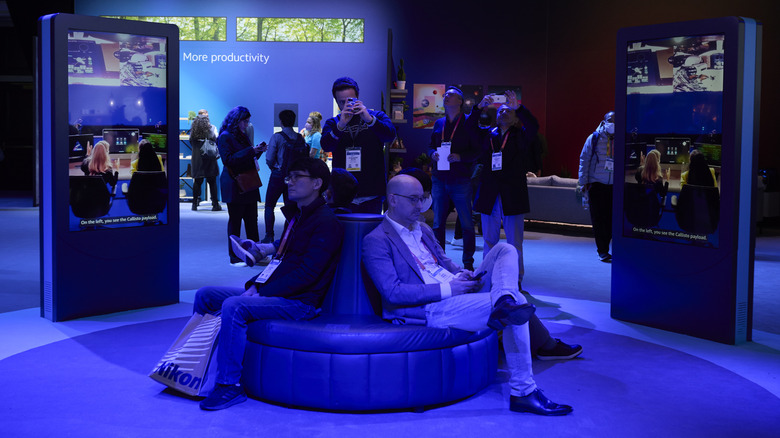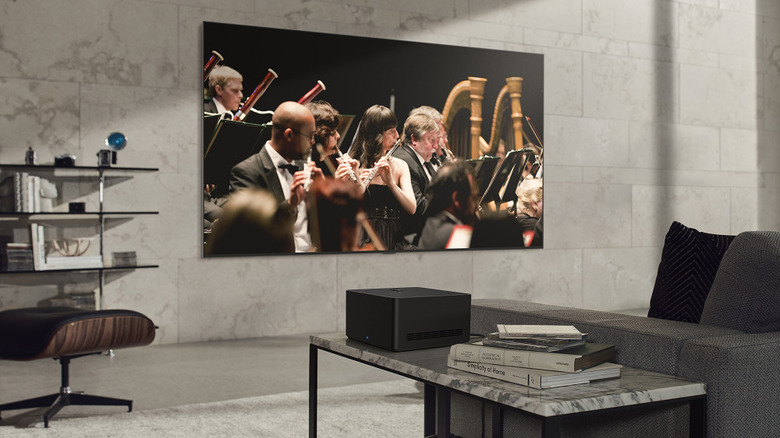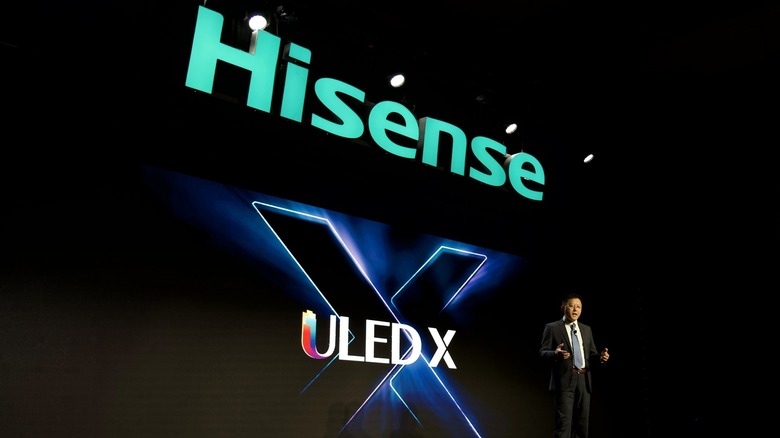Three CES 2023 TVs To Get Excited About
The most influential players in the tech sector consistently bring their biggest guns to the yearly Consumer Electronics Show. Some companies prepare the ground beforehand — we've already previewed some of the most exciting gaming laptops and monitors coming to CES — but now that the show is in full swing, we expect a full slate of attention-grabbing announcements.
One area we're most excited about is the range of smart TVs at the event. Like monitors and displays, TVs represent a chance for manufacturers to distinguish themselves from competition in a way customers can actually see. Only so many prospective buyers are invested in the race between OLED and backlit — the exact pixel resolution on a given screen — but when they can see superior performance play out in games and shows they enjoy daily, they have a concrete reason to pay up.
LG, Displace, and Hisense, all major players in the smart TV space, definitely had that in mind when they unveiled their lineup for CES. Here's what we know.
Displace claims to be the first truly wireless TV
Displace earns its name with an offer that, assuming it's more than marketing, could disrupt the whole smart TV marketplace. Billing its 55-inch beast as "the world's first truly wireless TV," Displace is debuting a whole new take on TV technology at CES.
The core of Displace's offer is a self-contained screen that doesn't need peripherals, external boxes or plugins, or so much as a power cable to function. The Displace TV secures to a surface via a proprietary active-loop vacuum system. At that point, it's ready to go: Displace TV is powered by a battery and operated by voice and gesture. The only external element is a wireless base unit that can be plugged into any outlet in the space. Beyond that, Displace TV is completely self-sufficient.
The 55-inch Displace TV delivers 4K resolution with an OLED screen, AMD processor, and NVIDIA GPU. Displace claims users can expect a month of steady use on a single fully charged battery, each TV still comes with four. Batteries can be charged separately and even hot-swapped into the machine without losing a moment of TV functionality. Displace TV is also completely modular, allowing users to tile together 55-inch screens to create displays of any size and shape.
All this information comes from Displace's latest press release. CES should give interested parties a chance to test Displace's claims for themselves.
LG's gigantic OLED is beyond cutting edge
If Displace is the disruptor of the TV brands on display at CES this year, LG is the legacy player. LG has been a major player in the smart TV space for years — delivering everything from small, affordable smart screens, to wall-devouring behemoths. Their CES showpiece, the Signature OLED M3, is decidedly the latter. Per LG itself, the M3 will be a mammoth 97 inches across.
LG isn't depending solely on size, either. While not quite as hands-off as the Displace TV, LG has its own wireless solution, offering a Zero Connect box that streams content to the screen over Wi-Fi, no cable required. Like Displace's base unit, the Zero Connect can work at a distance from the main screen, offering welcome flexibility when it comes to positioning the enormous display.
Size hasn't impacted LG's performance standards. The 97-inch display will still deliver 4K resolution on a self-lit OLED screen with a 120Hz refresh rate. That combination of spectacular dimensions, wireless flexibility, and top-flight performance is already serving the OLED M3 well: the display has already won two CES Innovation Awards for this monster.
Hisense brings new ULED tech to display battle
Changing a manufacturing standard always comes with conflict. Different people favor different solutions, and companies buy into tech that may or may not reflect the future standards of the marketplace.
Hisense isn't afraid to defy conventional wisdom when it comes to smart display technology. Eschewing OLED tech, Hisense has consistently invested time and funds into older LCD technology. As of CES, however, they claim to have hit a new level with their display offerings, none of which will be relying on conventional OLED.
Per Hisense, the ULED X technology debuting at CES will make Hisense displays the most powerful and advanced on the market. The company expects to employ ULED X across its product line. It claims ULED X will deliver twice the dynamic range and three times the environmental contrast of any OLED screen. Hisense commits to "a brighter picture, deeper contrast, wider viewing angle, and ultra-low reflection ratios," superior not just to OLED, but to any LCD technology on the market.
At least some data backs up Hisense's claims, too. The company's 110 ULED X display also won a coveted CES Innovation Award, right alongside the LG OLED M3 described above. Which is best? Hisense and LG expect customers to decide.



